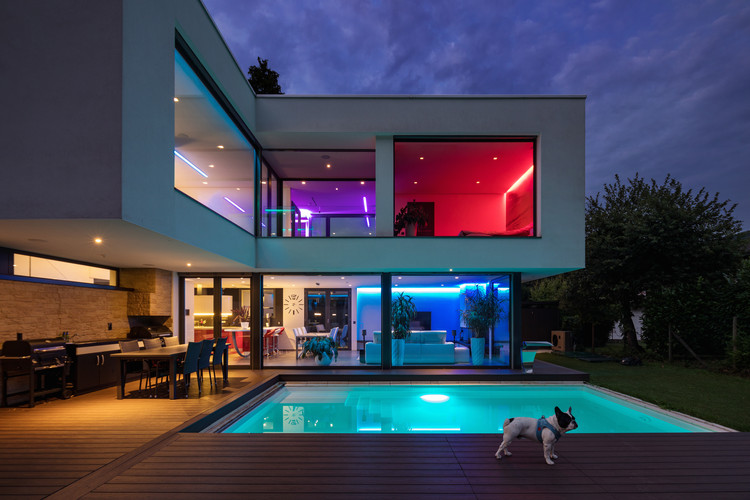
Imagine light fixtures that act as Bluetooth beacons, allowing smartphones to help visitors find their way around a building. Imagine a lighting system which can pinpoint the location of people and physical assets within the building. Imagine an automation system which can use occupancy data and personal preferences to orchestrate an optimized and personalized building environment.

Unlike wireless lighting systems like Wi-Fi, Bluetooth Mesh is designed for large collections of devices, numbering into the thousands. Switches, HVAC, sensors, light fixtures, and shades can communicate with each other by forwarding a message, or command, across all the devices in that Bluetooth chain until reaching the destination to perform said operation, (i.e. turn ON the third-floor office lights). The communication, instead of passing through your WiFi router, comes from the originating device and travels from light fixture to sensor, to AC unit, to any other chain of Bluetooth Mesh enabled devices, like a Bluetooth highway or a body’s central nervous system, until the command reaches the lights on the 3rd floor.
Bluetooth mesh supports device-to-device-to-device communication so that any device in the mesh network can communicate with any other device in the network. Furthermore, devices do not have to be in direct radio range of the originating command. Messages are relayed across the network from devices in a series of “hops” and can, therefore, span very large physical areas.

Terminology to Help You Understand Bluetooth Mesh
Nodes: Devices (i.e. switches, lighting fixtures, sensors, HVAC units, phones, etc.) which are a part of a Bluetooth mesh network.
Messages: Nodes in the Bluetooth mesh network communicate with each other using messages. Messages represent various types of commands that a node may initiate.
Bluetooth Mesh Vs. WiFi
The most significant difference between wireless (WiFi) lighting systems and Bluetooth Mesh lighting systems is in the method of communication. A network which uses WiFi is based around a central network called a router, and all commands and traffic pass through that router. Each light fixture must be able to communicate with the wireless network. If the router is unavailable, the network of devices become unavailable to communication.
In contrast, Bluetooth Mesh nodes (lighting fixtures, sensors, and other devices) receive messages from other nodes that are in direct radio range with the originating node.

2-Way Communication & User Behavior Data Collection
One of the advantages of using Bluetooth Mesh over WiFi for smart lighting is that it can support two-way communications. Once the luminaire sensors are in place, the same infrastructure can be used to monitor other building conditions, like occupancy or temperature, and send this information back to a control system. Gathering data about room use and user behavior patterns allows smart buildings to automate processes in the structure that can reduce energy consumption and improve the user experience on a very large scale with a lot fewer wires.
Building intelligence into LED luminaires was the first part of the smart lighting evolution. Many LED fixtures now feature embedded programmability to adjust for light characteristics such as hue, light intensity, dimming, and energy consumption; and when you add wireless communications like Bluetooth Mesh, you create intelligent lighting ecosystems. The ecosystem could be a commercial building or now, with the range of Bluetooth Mesh, a collection of buildings.
Check out a collection of Bluetooth Mesh ready devices.
About the Author
David Hakimi is a lighting specialist and one of the co-founders of Alcon Lighting. A graduate of the University of California Los Angeles (UCLA), David works on the front lines of the energy-efficient lighting revolution, enabling architects, designers, and lighting engineers to transition from outmoded halogen and fluorescent lighting to what David calls “the ideal replacement for all lighting applications,” —LEDs. David takes particular pride in Alcon’s design, energy, and green building knowledge, tracing his and Alcon’s commitment to quality, innovation, accountability and value back to the lessons learned from his father, a Southern California lighting salesman and consultant for more than two decades.

